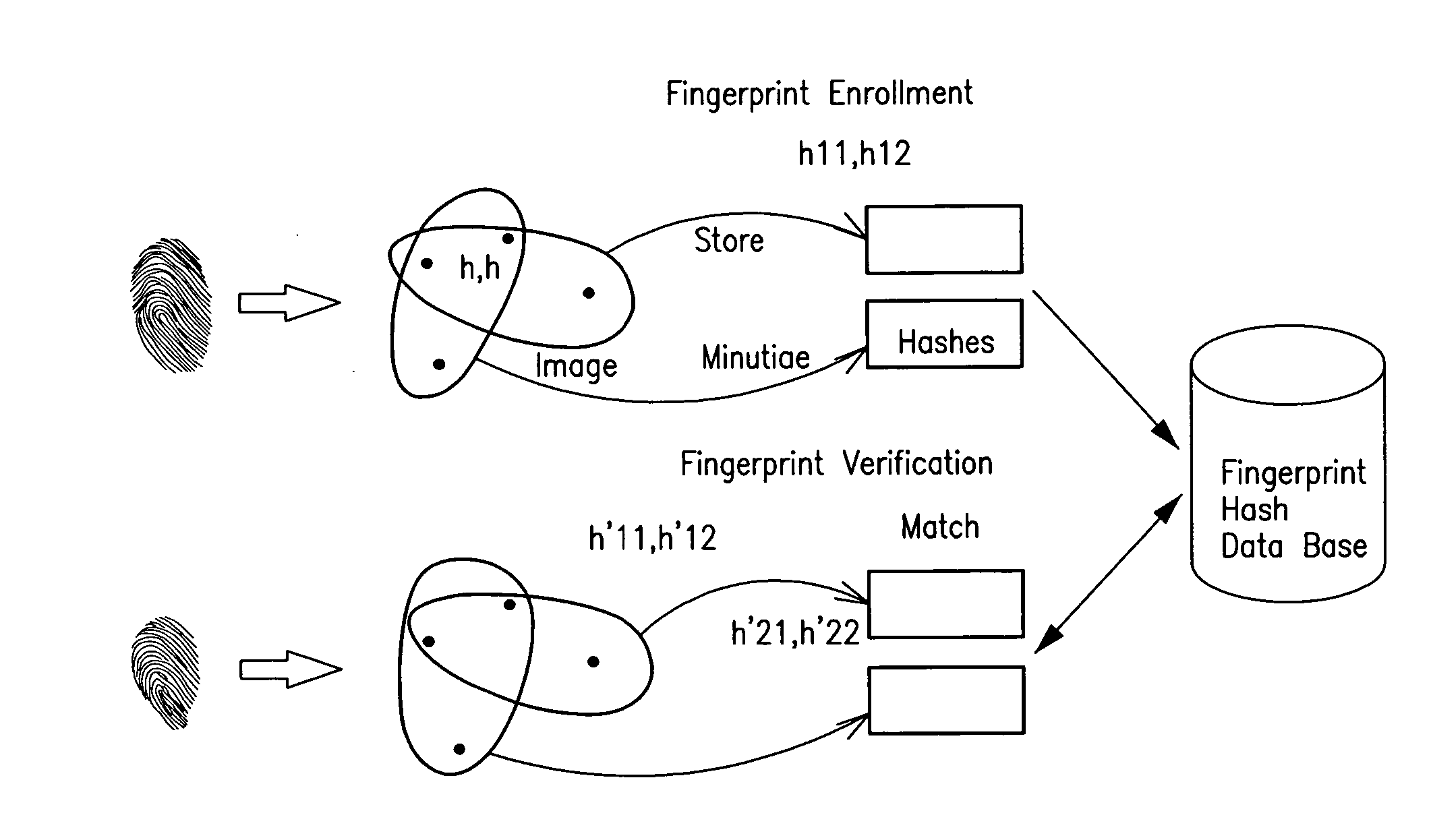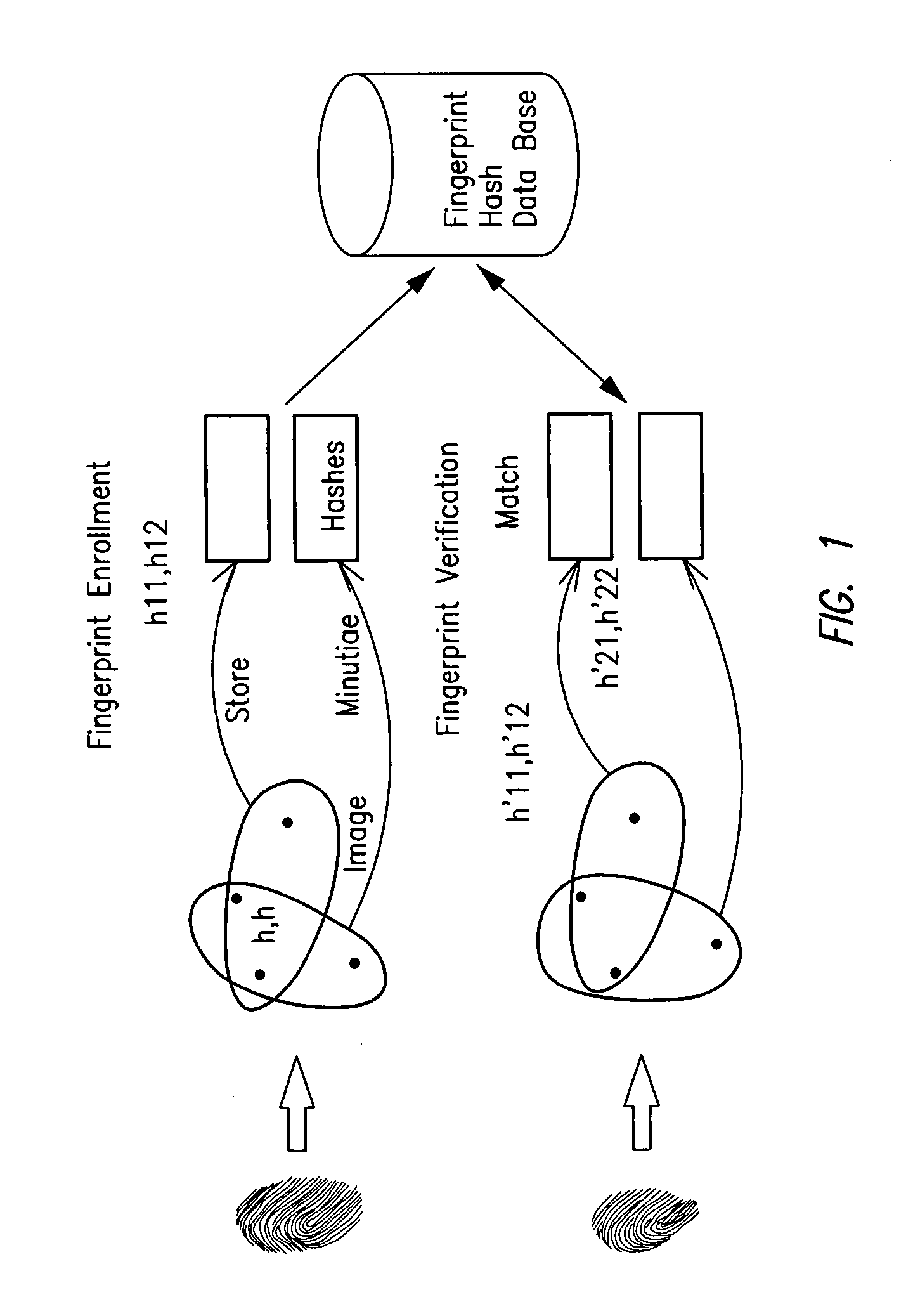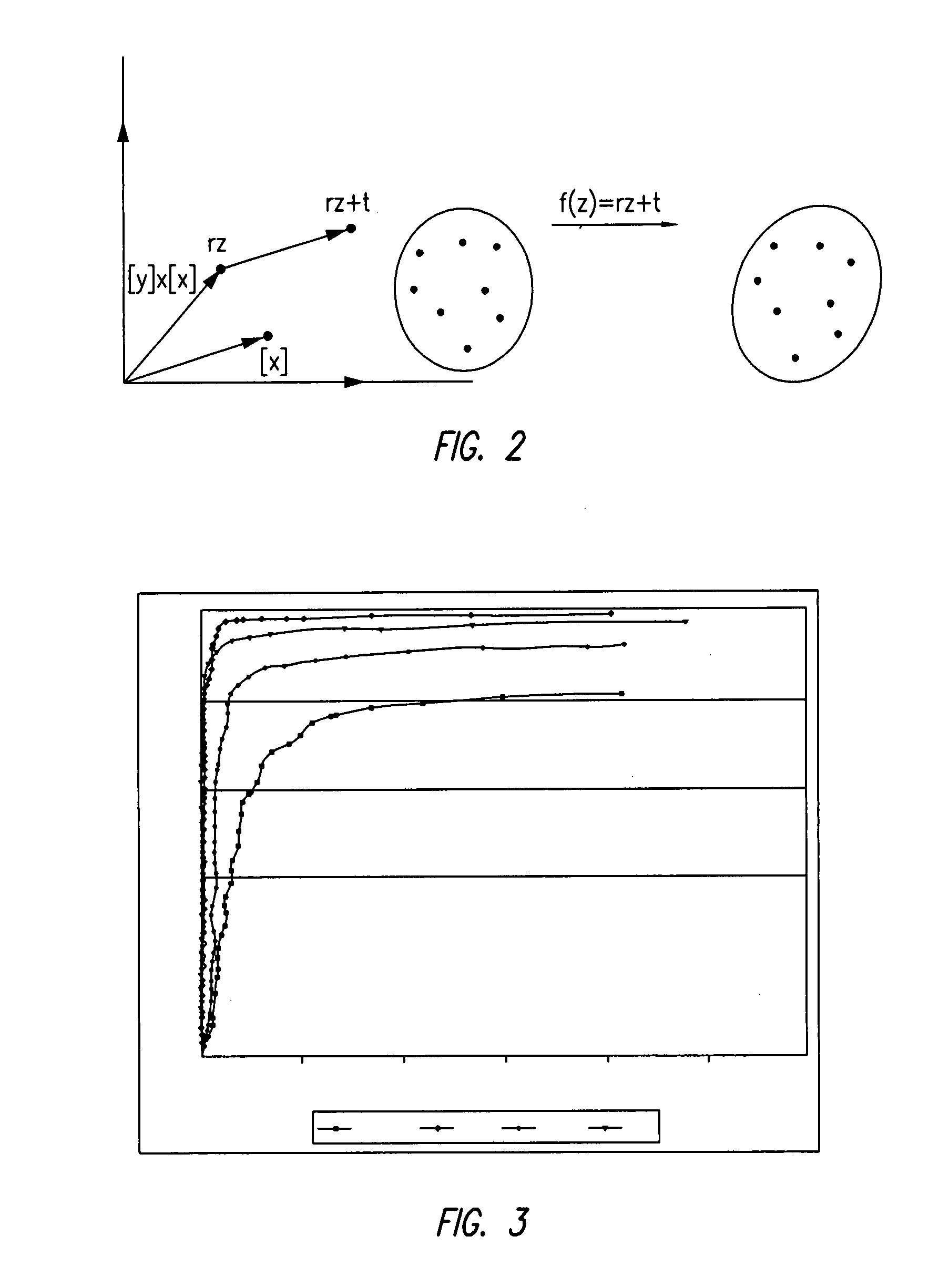Secure fingerprint matching by hashing localized information
a fingerprint and localization technology, applied in the field of biometrics, can solve the problems of passwords and tokens such as smart cards that can be easily reissued or revoked, their use presents its own vulnerabilities, and financial losses for providers
- Summary
- Abstract
- Description
- Claims
- Application Information
AI Technical Summary
Problems solved by technology
Method used
Image
Examples
Embodiment Construction
[0027] The invention is a method and apparatus to secure fingerprint templates by using innovative hash functions. Such hash functions can be utilized for any biometric modality where the information is unordered as in the case of minutia on fingerprints. We have successfully implemented a secure authentication system with performance comparable to plain matching systems. We have also presented methods to cancel and reissue the biometric and to personalize the hash values based on keys that could potentially be derived from other biometric traits.
[0028] Securing biometrics databases from being comprised is one of the most important challenges that must be overcome in order to demonstrate the viability of biometrics based authentication. In this paper we present a novel method of hashing fingerprint minutia and performing fingerprint identification in the hash space. Our approach uses a family of symmetric hash functions and does not depend on the location of the (usually unstable) ...
PUM
 Login to View More
Login to View More Abstract
Description
Claims
Application Information
 Login to View More
Login to View More - R&D
- Intellectual Property
- Life Sciences
- Materials
- Tech Scout
- Unparalleled Data Quality
- Higher Quality Content
- 60% Fewer Hallucinations
Browse by: Latest US Patents, China's latest patents, Technical Efficacy Thesaurus, Application Domain, Technology Topic, Popular Technical Reports.
© 2025 PatSnap. All rights reserved.Legal|Privacy policy|Modern Slavery Act Transparency Statement|Sitemap|About US| Contact US: help@patsnap.com



